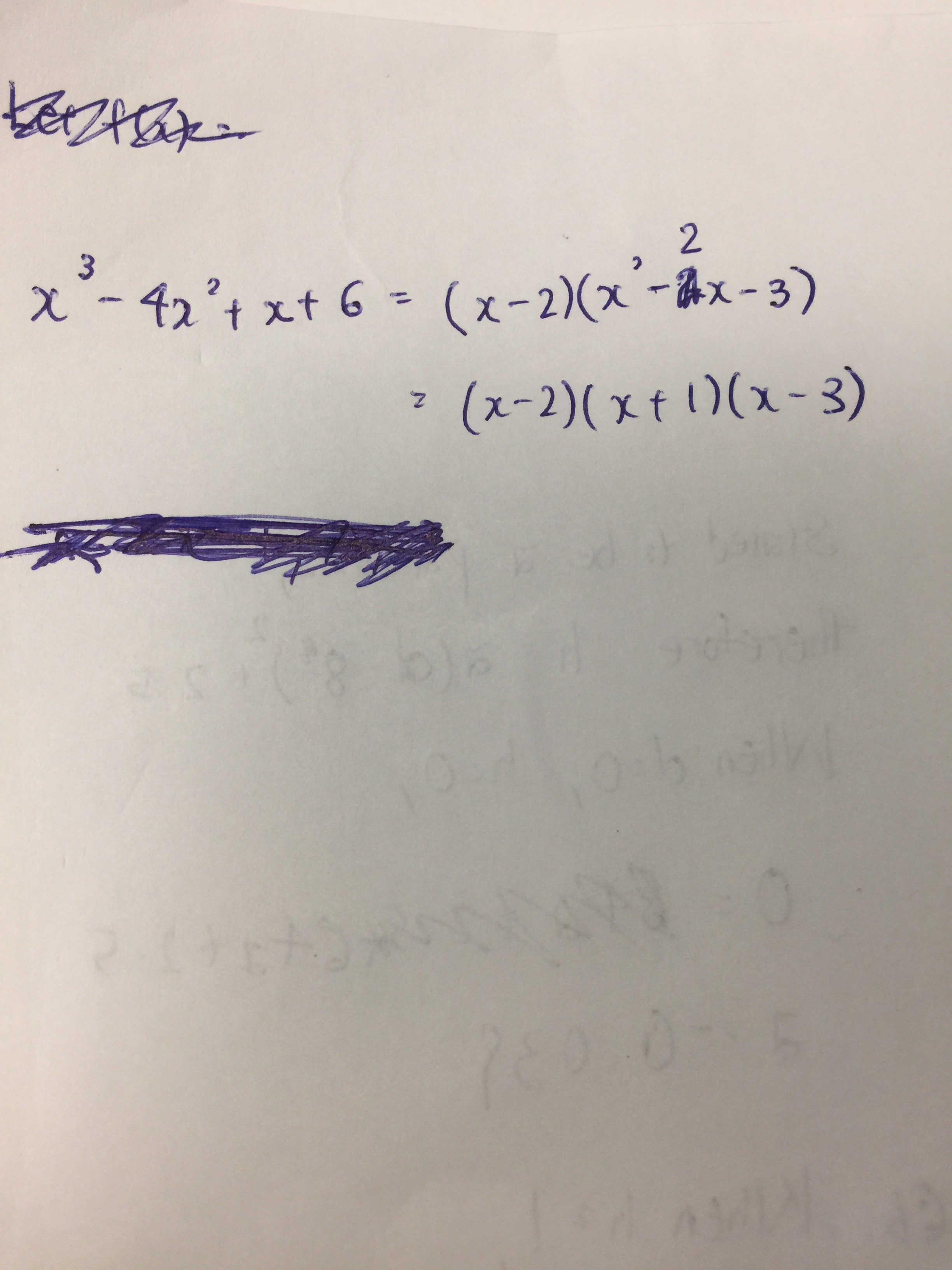Christmas MT's answer to Nur Ayuni Yazid's Secondary 3 A Maths question.
done
{{ upvoteCount }} Upvotes
clear
{{ downvoteCount * -1 }} Downvotes

a and b weren't provided, but a probably = 1 and b probably = 6, and the factorisation is done based on that assumption. You can factorise it by comparing coefficients or by long division.
This also means that for part (b), all you need to do is to let y = x+1, then you'd get the exact same expression in part (a). Therefore y = -1, 2, 3, which means x = -2, 1 , 2.
This also means that for part (b), all you need to do is to let y = x+1, then you'd get the exact same expression in part (a). Therefore y = -1, 2, 3, which means x = -2, 1 , 2.
Date Posted:
7 years ago

